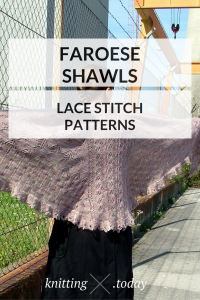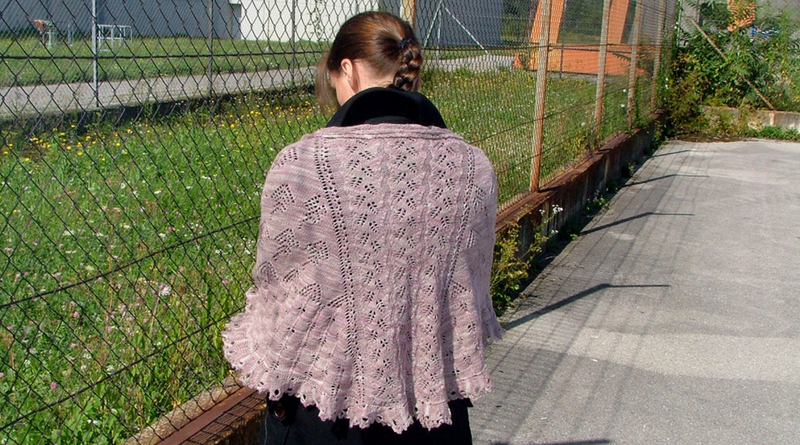Faroese Shawl Lace Stitch Patterns
Most knitting charts come as rectangles but shawl shapes vary. Today I show you how converting charts for Faroese shawl lace patterns works, and share my knowledge about how to make charts work with Faroese shawl designs.
This post is part of my article series about adapting stitch patterns. You can browse the table of contents here:
Adapting Stitch Patterns for All Shawl Shapes: Table of Contents
What Are Faroese Shawls?
A Faroese shawl is a traditional piece of clothing from the Faroe Islands (hence the name, obviously). The most distinguishing characteristics of Faroese shawls are the center back gusset shaping and their shoulder shaping.

Faroese shawls can be constructed the traditional way or by working raglan increases for their shoulder shaping.
Traditional Faroese Shawls are constructed by working increases (if you decide to work top-down) or decreases (if you decide to work bottom-up) at certain points of the shawl additionally to the decreases similar to those worked in triangle shaped shawls. The amount and positions of the in-/decreases depend on of the exact shape of the shawl you want to create, but generally there are two to four of these rows present.
In raglan shaped Faroese shawls the shoulder shaping is achieved by working raglan increases in the first third of the triangle side panels of the shawl.
Both construction methods are based on triangles as their basic shapes.
Creating Faroese Shawl Lace Stitch Patterns
Traditional Faroese Shawls
Implementing stitch patterns into traditional shaped Faroese shawls is done by using triangle charts with the corresponding increases (usually, two stitches every rows like in triangle shawls with center panels) and taking care of the extra stitches introduced by the additional increase rows.
The easiest way of doing this is to create one chart for each section – the areas between the increase rows – and calculating the amount and positions of the additional stitches to take into account for the next section’s chart.
The best way to explain how to do this is to actually show you charting in action – you can watch the video as part of the online course Adapting Stitch Patterns.
Raglan Faroese Shawls
Adapting stitch patterns for raglan shaped Faroese shawls means you need to take care of the extra stitches added by the raglan shaping in your triangle side panels. An example for a side panel chart including raglan stitches is shown below.

Notice the extra stitches created by the raglan increases showing in the altered increase rates on the left and right side starting at row 5? This is your shoulder shaping – shown in chart form!
Summary
Faroese shawls are based on triangles and shaped using additional increases – either by using increase rows or raglan shaping. When adding stitch patterns to Faroese shawls these additional increases need to be taken into account when adapting stitch patterns.



Pingback: Adapting Stitch Patterns: How to Fit Stitch Patterns to Shawl Shapes